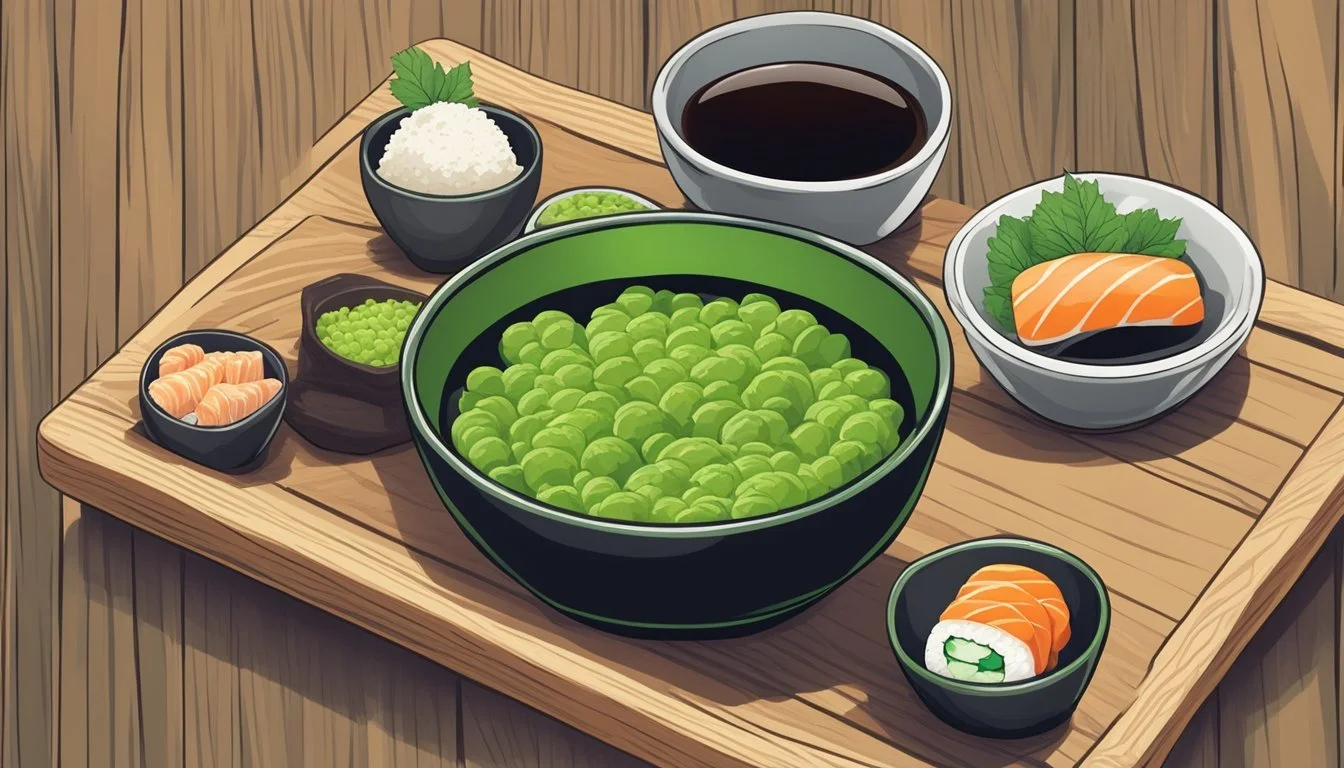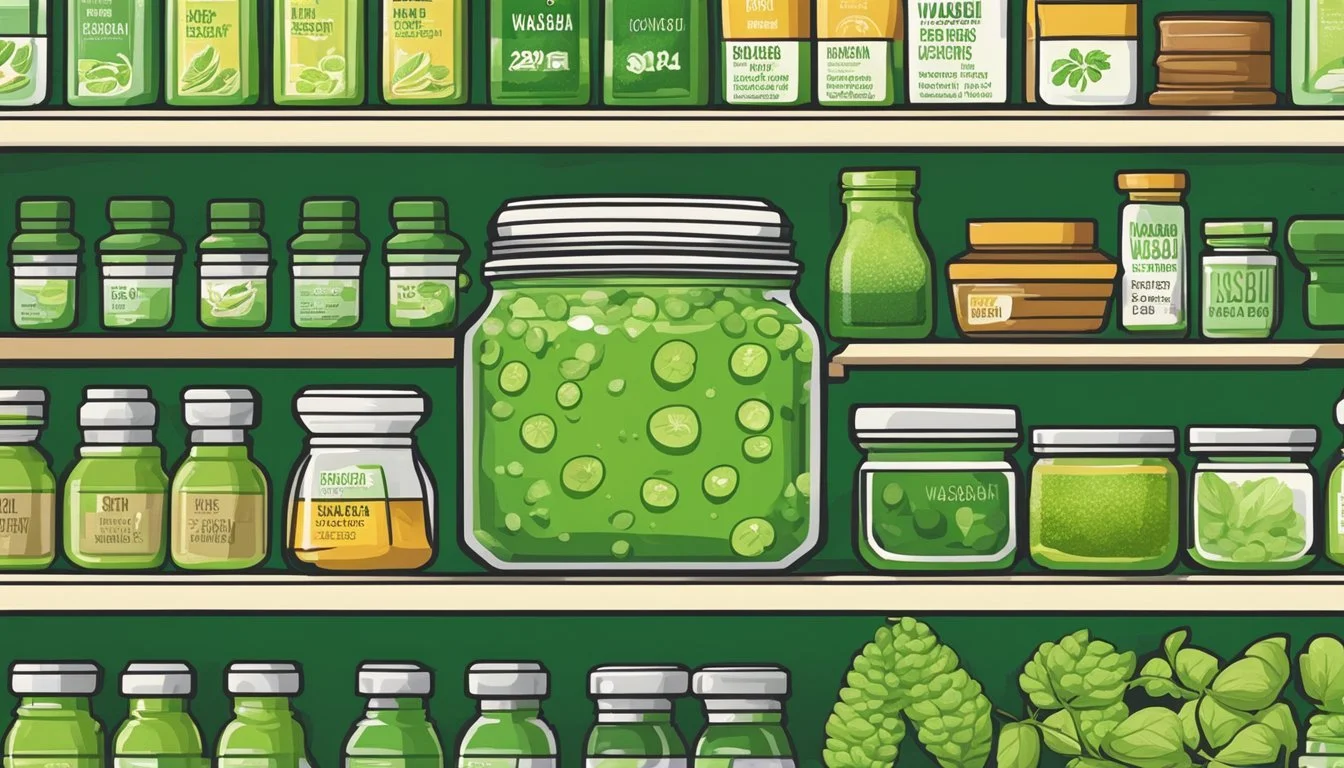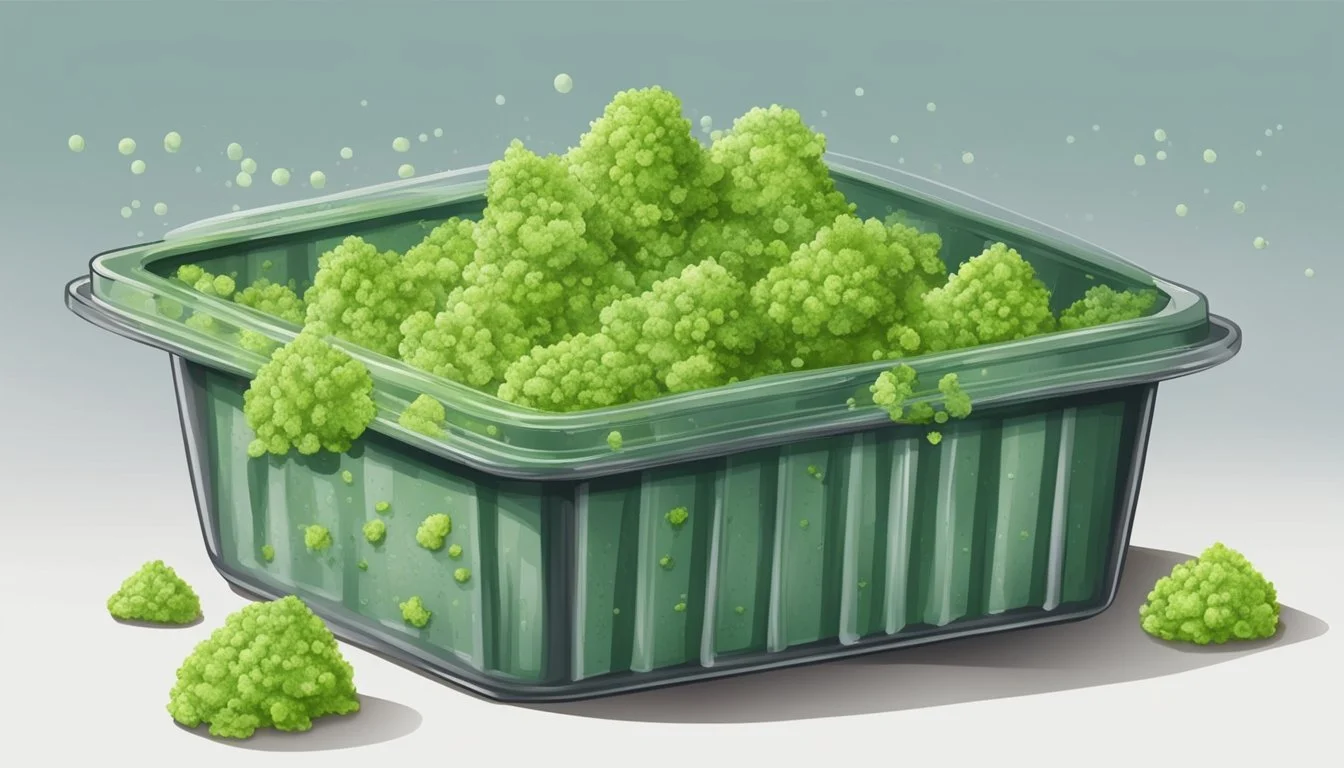Does Wasabi Go Bad?
Understanding Shelf Life and Storage Methods
Fresh wasabi, wasabi paste, and wasabi powder are popular in many kitchens, but all forms of wasabi can go bad. The shelf life depends largely on the form that it's in and how it's stored. Fresh wasabi root, for instance, does not last long and should be used quickly to enjoy its full flavor and aroma.
Wasabi paste and wasabi powder have longer shelf lives due to preservatives added during processing. Despite their longer shelf life, wasabi paste and powder can lose their flavor, aroma, and texture over time. It's important to look for signs of spoilage such as mold, discoloration, or an unpleasant smell.
Proper storage can extend the usability of wasabi products. Fresh wasabi should be refrigerated, while wasabi paste and powder should be kept in a cool, dry place. By identifying signs of spoilage and understanding proper storage methods, one can ensure they're always using fresh, flavorful wasabi in their dishes.
Understanding Wasabi
Wasabi, an essential element in Japanese cuisine, offers a strong, distinct flavor profile. This section explores what wasabi is and various types available.
Defining Wasabi
Wasabi is a green paste made from the grated stem of the wasabi plant or wasabi root. It’s known for its sharp, spicy taste that clears the sinuses rather than burning the tongue. Real wasabi is derived from the plant Wasabia japonica, which thrives in cool, mountain stream environments.
The term "wasabi" is often used to refer to other products, such as horseradish or mustard blends, which mimic the flavor at a lower cost. Real wasabi can be challenging to cultivate, driving up its price. These substitutes are sometimes called Japanese horseradish, although they lack the complexity of genuine wasabi.
Types of Wasabi
Wasabi comes in several forms, including wasabi paste, wasabi powder, and fresh wasabi root.
Wasabi paste is frequently sold in tubes and is convenient for immediate use. Available in most supermarkets, it usually contains a mixture of horseradish, mustard, and food coloring.
Wasabi powder is another common form where the plant is dried and ground. Mixed with water, it reconstitutes into a paste. This format has a longer shelf life compared to the paste.
Fresh wasabi root offers the most authentic flavor. Grating the root releases compounds that quickly lose potency, so it is best used immediately after preparation.
Each form has its usage and storage methods to maximize shelf life and flavor.
Shelf Life and Freshness
Wasabi can be enjoyed in various forms, each with its own shelf life and storage requirements. This section will delve into how long each type of wasabi lasts and the best ways to keep it fresh.
Fresh Wasabi
Fresh wasabi has a short shelf life compared to its powdered or paste counterparts. Typically, it can last up to 2 weeks if stored in the refrigerator. When storing fresh wasabi, it should be kept in a damp cloth or paper towel and placed in an airtight container to maintain its freshness.
Freezing fresh wasabi is an option if you need to extend its shelf life, potentially lasting up to 10 months.
However, its texture and flavor may change slightly. Always look for mold or discoloration, which are clear signs that the wasabi has gone bad and should not be consumed.
Wasabi Paste and Powder
Wasabi powder, due to its dry nature, has a longer shelf life than fresh wasabi. If kept in a cool, dry place, it can last 6 to 12 months past its best before date. Refrigeration is unnecessary for wasabi powder, but keeping it in an airtight container will help maintain its potency and flavor.
Wasabi paste, containing moisture, has a shorter shelf life. It can last up to 3 months when refrigerated and even longer if frozen. Unopened wasabi paste can last about 2 years past the sell-by date; once opened, it is best used within 1-2 years if stored properly in an airtight container in the refrigerator.
Signs that wasabi paste has gone bad include mold, an unpleasant smell, or noticeable discoloration.
Signs of Spoilage
Recognizing signs of spoilage in wasabi is crucial to ensure it remains safe and enjoyable to consume. Indicators such as visual changes, alterations in texture, and shifts in aroma and flavor help determine if wasabi has gone bad.
Visual and Textural Changes
When wasabi starts to spoil, mold growth often appears first. Look for any fuzzy spots or unusual discoloration on the surface. A noticeable color change from its typical green hue to a darker or yellowish tint is a clear indication of spoilage.
The texture of wasabi also changes as it deteriorates. Paste may become watery or separate, while powdered wasabi might clump together. If the consistency appears altered, it's best to discard it.
Aroma and Flavor
A fresh wasabi should have a sharp, pungent aroma indicative of its spicy nature. Spoiled wasabi develops an off smell that can be described as rancid or musty. This is especially significant in detecting spoilage as the characteristic smell becomes noticeably unpleasant.
Flavor changes are equally telling. Fresh wasabi has a sharp, clean heat, but spoiled wasabi will taste flat or sour instead. Trusting your senses of smell and taste can help determine its integrity. If the aroma or flavor seems off, it’s wise to avoid consumption.
Storage Solutions
Storing wasabi properly is crucial to maintaining its quality and extending its shelf life. This involves keeping it in optimal conditions and using the right containers to minimize exposure to air and moisture.
Proper Storage Conditions
Both fresh wasabi and wasabi paste need careful storage to retain their freshness. Fresh wasabi should be tightly wrapped in muslin or a moist paper towel and then stored in the refrigerator.
To keep wasabi paste, transfer it to an airtight container or ziplock bag. Refrigeration is essential for wasabi paste, as it maintains the right climate-controlled environment to keep the paste from spoiling.
For powdered wasabi, store it in an airtight glass container and keep it in a cool, dry place away from light and humidity. This helps in preserving its potency and flavor.
Extending Shelf Life
Extending the shelf life of wasabi requires specific methods depending on its form. Fresh wasabi can be frozen to prolong its usability for up to 10 months. Wrap the wasabi root in cling film and place it in the freezer.
Wasabi paste, on the other hand, lasts a few weeks to three months when stored in the refrigerator. Freezing wasabi paste is also possible, which can further extend its shelf life. Ensure it's kept in airtight containers to prevent freezer burn.
For powdered wasabi, reseal the container tightly after each use, and consider using moisture-absorbing packets to keep it dry. These steps help protect the wasabi from environmental factors that could cause it to degrade.






